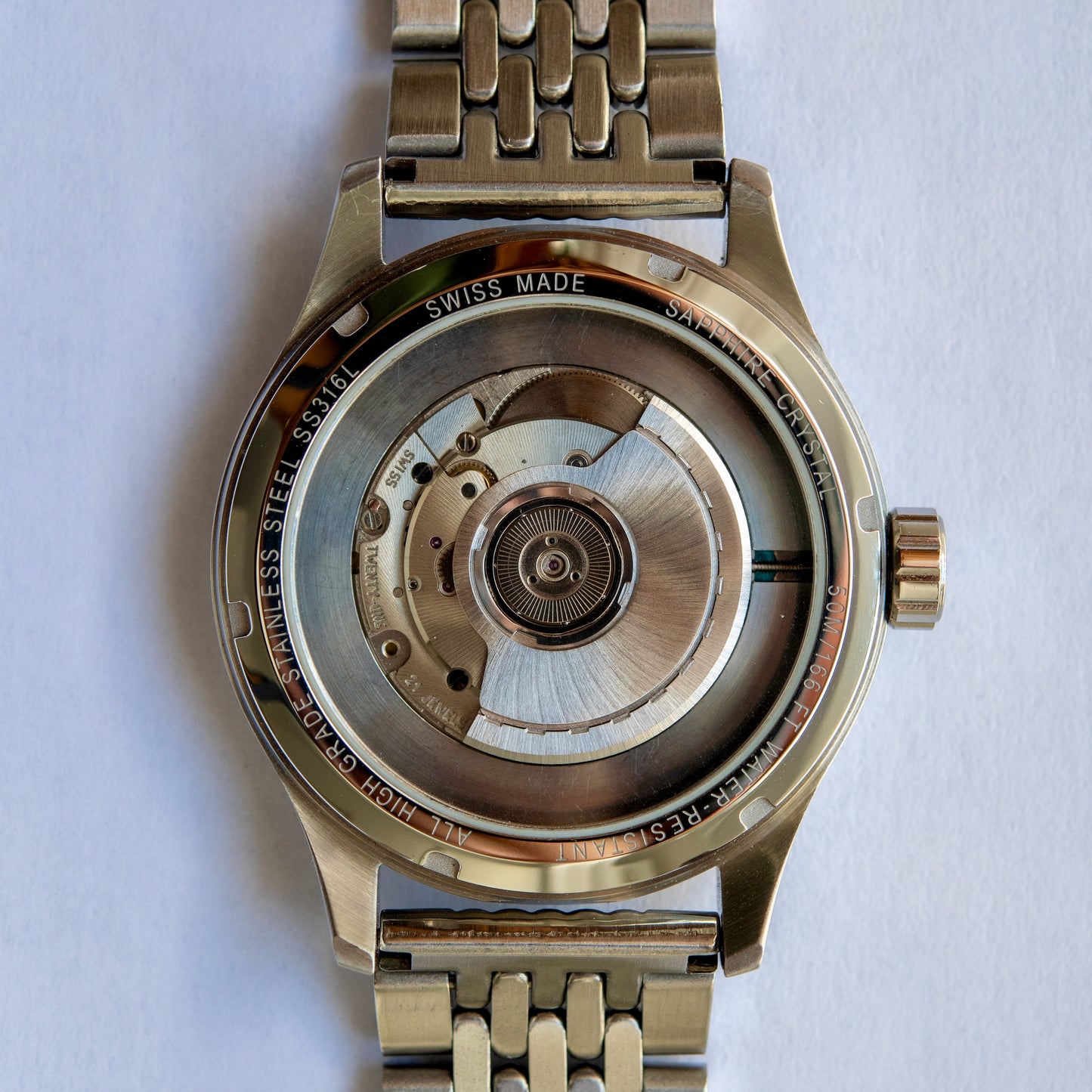Detailed information
The Vincennes watch is characterized by a celestial blue dial made of anodized titanium. The crystallized surface plays with light, revealing reflections in perpetual motion depending on the angle and ambient lighting. It is reminiscent of the play of light in stained-glass windows.
The rose window is materialized by a delicate stainless steel mesh, alternating matte hollows and hand-polished edges, for a contrast of textures and depth. The design is inspired as faithfully as possible by the architecture of the rose of the Sainte-Chapelle of the Vincennes Castle. You will find below more information about its history, construction and meaning. To make it easier to read, the hours are marked by hand-painted white indexes.
The large diameter of the case (44 mm) highlights the work on the dial, while the distance from horn to horn is kept to 51 mm, thus optimizing wearing comfort. For reference, the illustrations above are made on a wrist of 18 cm.
The watch is powered by a Swiss ETA 2892-A2 automatic movement, a caliber renowned for its quality and reliability. Its compactness allows the watch to maintain a thickness of only 11 mm, despite a dial three times thicker than usual.
Due to the crystalline texture of titanium, as well as the hand-assembled and finished nature of the product, slight variations may occur from one watch to another.

























